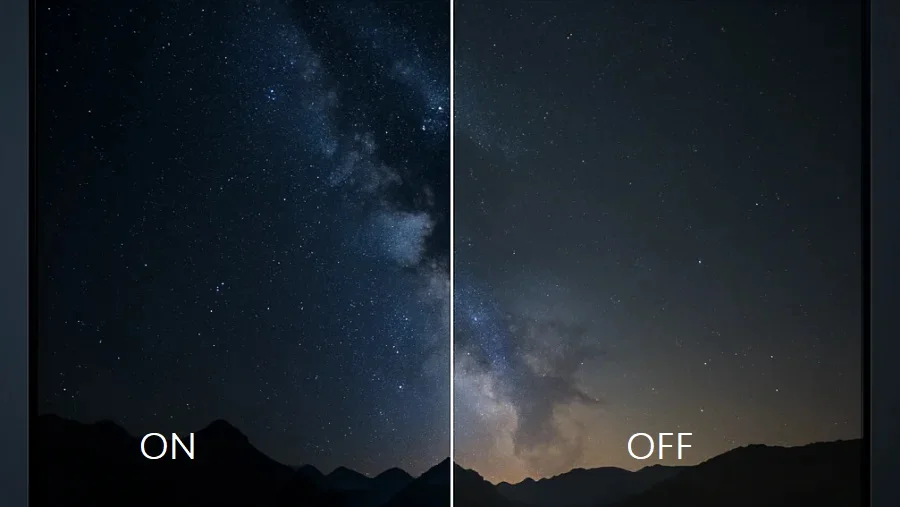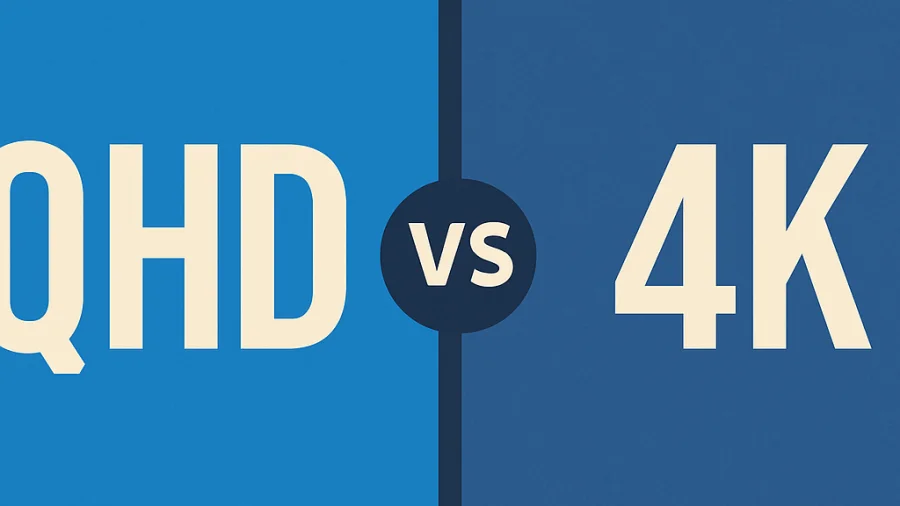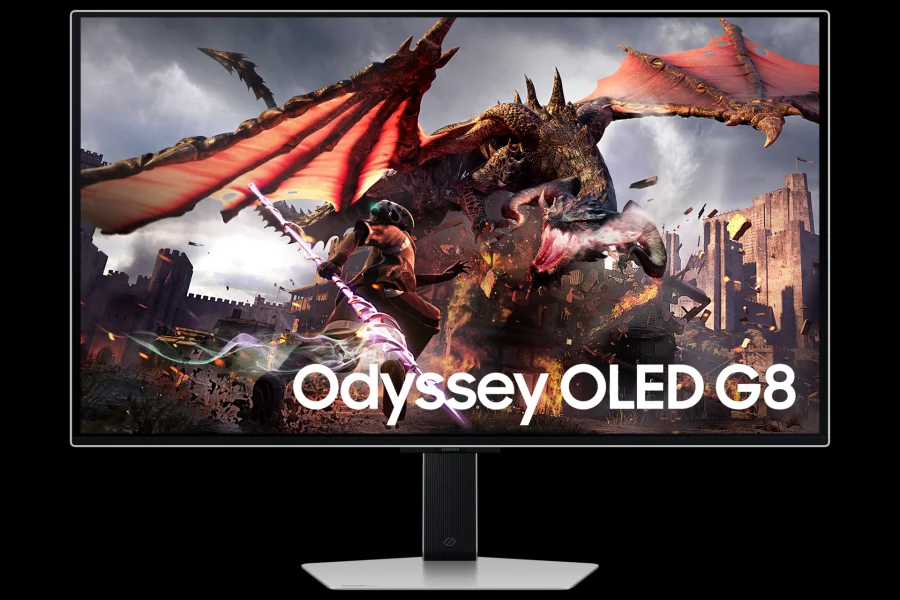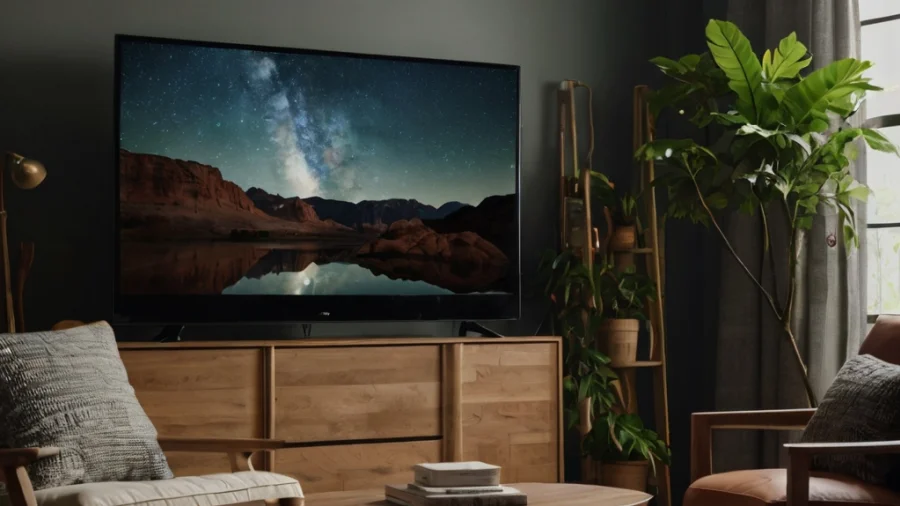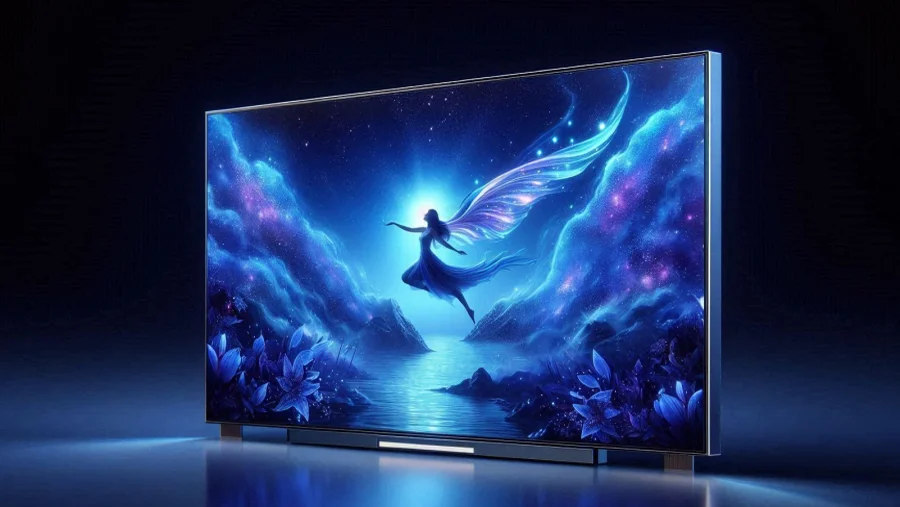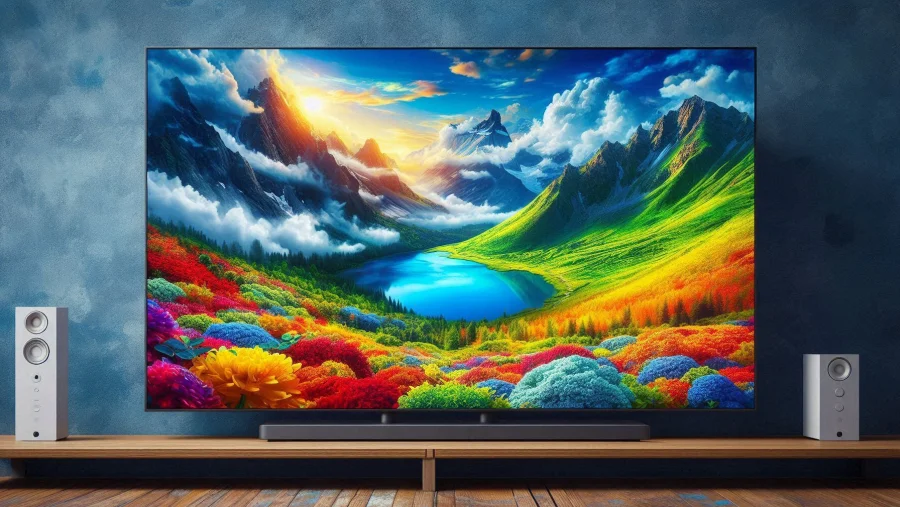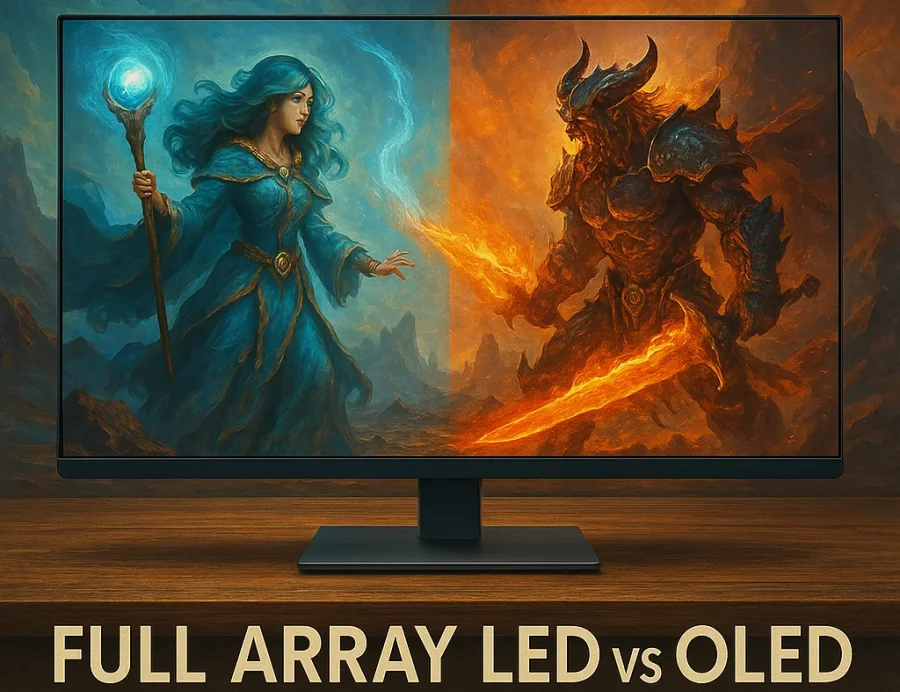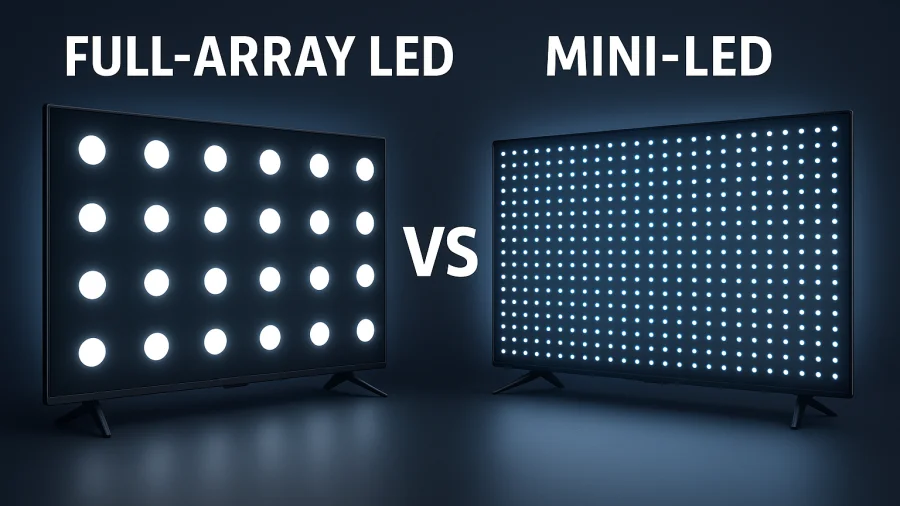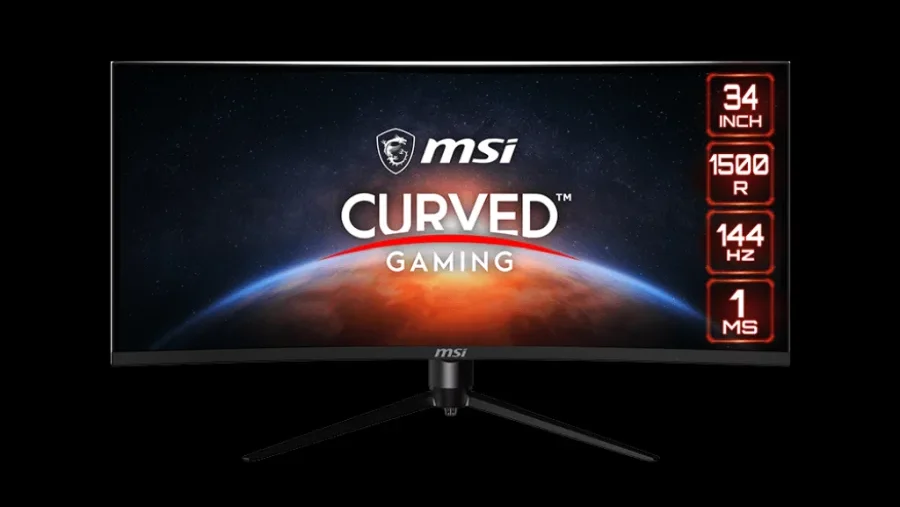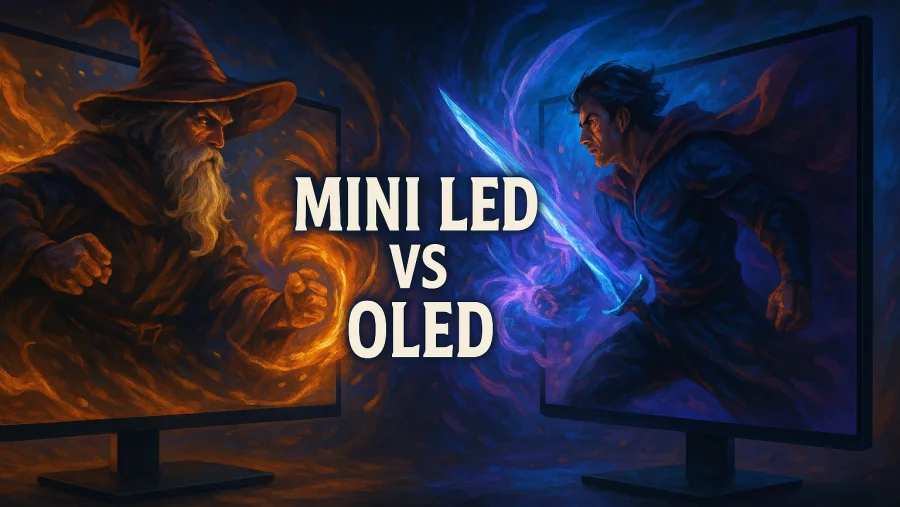
Choosing a new television or monitor often involves navigating complex technical terms. Two dominant display technologies currently vying for consumer attention are Mini LED and OLED.
Mini LED refers to displays using significantly smaller Light Emitting Diodes (LEDs) for their backlight compared to traditional LCD screens.
OLED, standing for Organic Light Emitting Diode, features pixels that produce their own light individually.
Understanding the fundamental differences between these technologies is crucial for making an informed purchase. This article will delve into the strengths and weaknesses of both Mini LED and OLED.
Understanding Mini LED Technology
Mini LED technology represents an evolution of traditional Full Array LED-backlit LCD (Liquid Crystal Display) screens. Check: Full Array LED vs Mini-LED.
Its primary innovation lies in the dramatically reduced size of the LEDs used in the backlight. These smaller LEDs allow for significantly more individual dimming zones behind the LCD panel.
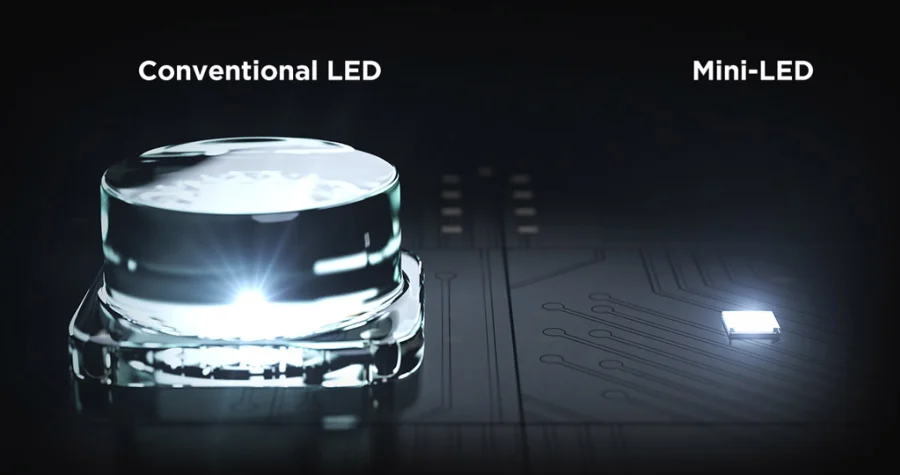
Having thousands of these zones enables much finer control over which parts of the screen are lit and which remain dark.
This precise local dimming results in deeper blacks and higher contrast compared to standard LED displays.
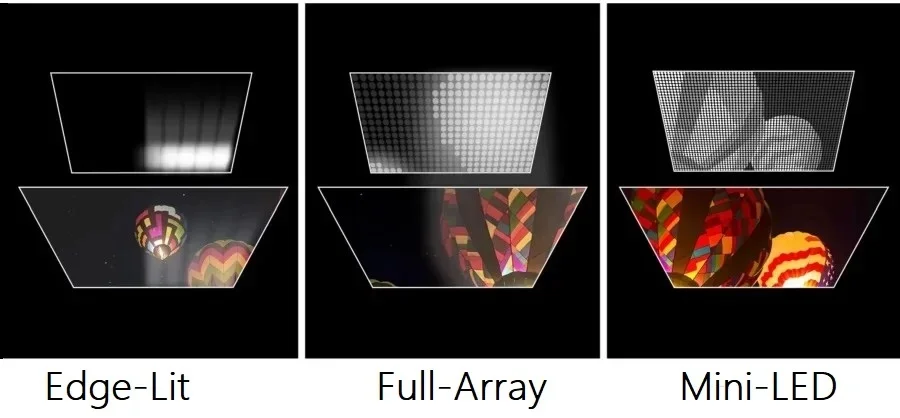
Mini LED displays can also achieve very high peak brightness levels. It’s important to remember that Mini LED still relies on an LCD layer to produce colors and filter the light.
Understanding OLED Technology
OLED technology operates on a fundamentally different principle: self-emissive pixels. Each individual pixel in an OLED display is made of an organic compound that emits its own light when an electric current is applied.
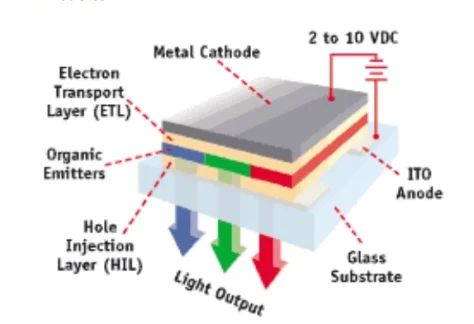
Because each pixel can be turned completely off independently, OLED screens can achieve perfect black levels. This ability results in an effectively infinite contrast ratio, providing stunning visual depth.
OLED displays are also known for their exceptionally wide viewing angles, with minimal color or contrast shift when viewed off-axis.
The rapid response time of OLED pixels leads to excellent motion clarity, ideal for fast-paced content.
Historically, a potential concern with OLED has been the risk of permanent image retention, often called burn-in, although modern panels have improved mitigations like pixel shift technology.
Mini LED vs OLED: Head-to-Head Comparison
| Feature | Mini LED | OLED |
|---|---|---|
| Brightness | Generally higher peak and sustained brightness. Excellent for bright rooms. | Very good brightness, improving with new tech, but typically lower peak than Mini LED. |
| Black Levels | Very deep blacks due to local dimming. | Perfect, true blacks as pixels can turn off completely. |
| Contrast Ratio | Very high, thanks to local dimming, but finite. Can exhibit minor blooming. | Effectively infinite contrast ratio due to perfect blacks. No blooming. |
| Color Accuracy | Can achieve excellent color accuracy and wide color gamuts. | Can achieve excellent color accuracy and wide color gamuts. |
| Color Volume | Potentially higher perceived color volume due to greater brightness capability. | Excellent color volume, enhanced by perfect blacks. Newer tech boosts brightness impact. |
| Viewing Angles | Very good for LCD, but some minor color/contrast shift possible off-axis. | Exceptional, near-perfect viewing angles with minimal shift. |
| Motion Handling | Typically very good, but relies on LCD pixel response time. | Outstanding, near-instantaneous pixel response time leads to extremely clear motion. |
| Burn-in Risk | No risk of burn-in (being LCD-based). | Small theoretical risk with static images over extreme periods. Modern panels have mitigations. |
| Price | Often more affordable, especially at larger sizes. Premium models can be costly. | Generally positioned as premium, often more expensive, but prices are decreasing. |
- Brightness:
- Mini LED generally achieves higher peak and sustained brightness levels, making it advantageous in brightly lit rooms.
- OLED brightness has improved significantly but typically doesn’t reach the same maximum levels as top-tier Mini LEDs.
- Black Levels and Contrast:
- OLED excels here with its ability to turn pixels completely off, delivering true blacks and an infinite contrast ratio.
- Mini LED achieves very deep blacks thanks to local dimming, but slight blooming (light halo around bright objects on dark backgrounds) can sometimes occur due to the backlight zones not being pixel-sized.
- Color Accuracy and Volume:
- Both technologies can offer excellent color accuracy and wide color gamuts.
- Mini LED’s higher brightness can sometimes give it an edge in perceived color volume, especially in very bright HDR scenes.
- Viewing Angles:
- OLED maintains color and contrast integrity from virtually any viewing angle.
- Mini LED viewing angles are generally very good for LCD technology but can show some minor degradation compared to OLED when viewed far off-center.
- Motion Handling:
- OLED’s near-instantaneous pixel response time provides exceptionally clear motion without blur.
- Mini LED motion handling is typically very good, but the underlying LCD pixel response time means it might not be quite as perfectly sharp as OLED during very fast motion.
- Burn-in Risk:
- OLED carries a small theoretical risk of permanent image retention (burn-in) with static content displayed for extremely long periods, though manufacturers implement mitigation techniques (pixel shifting, logo dimming) that make this rare in typical use.
- Mini LED technology, being based on LCD panels, is not susceptible to burn-in.
- Price:
- Mini LED TVs and monitors are often more affordable, especially at larger screen sizes, compared to OLED equivalents, although premium Mini LED models can be expensive.
- OLED displays tend to be positioned as premium products, often carrying a higher price tag, though prices have become more competitive over time.
Best Use Cases for Each Technology
Mini LED displays shine in specific environments and for particular types of content. They are an excellent choice for bright living rooms due to their high peak brightness, combating ambient light effectively.
Their brightness capability also makes them superb for High Dynamic Range (HDR) content, delivering impactful specular highlights. Gamers who prioritize maximum brightness and have zero concerns about potential burn-in from static interface elements might prefer Mini LED.
Consumers seeking larger screen sizes on a slightly tighter budget often find better value propositions with Mini LED.
OLED technology excels in scenarios where ultimate picture fidelity is paramount. They are ideal for dedicated home theater setups or viewing in dimly lit rooms, where their perfect blacks and infinite contrast truly stand out.
Film enthusiasts often prefer OLED for its cinematic image quality, pixel-level light control, and perfect black levels. Users demanding the best possible viewing angles and pixel-perfect contrast without any blooming will appreciate OLED.
Gamers prioritizing the absolute fastest pixel response time and perfect motion clarity might lean towards OLED, accepting the minimal burn-in risk with modern panels.
Future Developments & Industry Trends
Advancements in Mini LED technology
Manufacturers are continuously refining Mini LED technology.
Expect even more dimming zones and improved AI algorithms for better backlight control, further reducing blooming and enhancing contrast in real-time, towards OLED levels.
Efficiency improvements may also lead to slimmer designs and lower power consumption in future Mini LED panels.
Improvements in OLED
OLED technology is also advancing rapidly.
Newer generations, like QD-OLED (Quantum Dot OLED) and MLA OLED (Micro Lens Array), are achieving significantly brighter OLED panels, closing the gap with Mini LED.
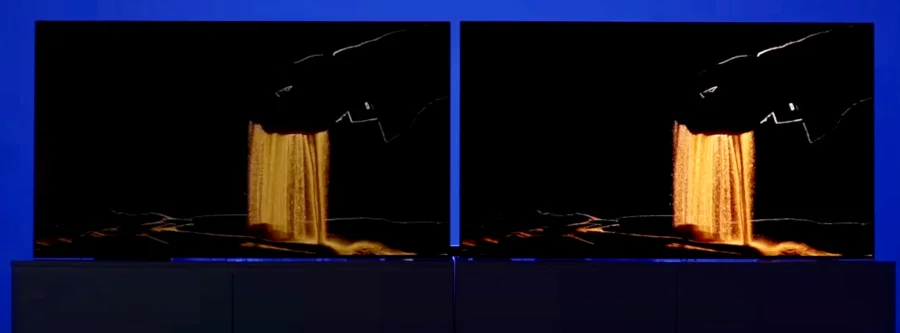
Continued research focuses on enhancing panel longevity and implementing even better resistance to burn-in through improved organic materials and sophisticated software features.
Emerging technologies that could compete with both
Beyond Mini LED and OLED, other technologies are emerging on the horizon.
Micro LED is often seen as the potential ultimate display technology, combining the self-emissive nature and perfect blacks of OLED with the high brightness, longevity, and burn-in immunity of inorganic LEDs.
However, Micro LED currently remains extremely expensive and challenging to manufacture at consumer-friendly sizes and resolutions.
Other potential advancements in areas like Quantum Dot displays without traditional backlights could further shake up the market in the coming years.
Conclusion
The choice between Mini LED and OLED isn’t about one being definitively ‘better’ overall.
Mini LED offers outstanding brightness, strong contrast for an LCD-based tech, and immunity to burn-in, making it a versatile choice, especially for bright rooms and HDR impact.
OLED provides unparalleled contrast, perfect blacks, superior viewing angles, and excellent motion clarity, ideal for cinematic experiences in controlled lighting environments.
Ultimately, the ‘supreme’ display technology depends on your specific viewing habits, your room environment, your budget, and your personal priorities regarding picture quality attributes.
By understanding the core differences, strengths, and weaknesses outlined here, consumers can make a more confident and informed decision tailored to their needs.
Q&A
Is mini LED as good as OLED?
Mini LED and OLED are both premium display technologies, but they excel in different ways. Mini LED TVs can achieve significantly higher peak brightness levels, making them excellent for bright rooms and HDR content. OLED TVs, however, offer perfect black levels and infinite contrast because each pixel lights itself, leading to stunning picture depth, especially in dark rooms. Neither is universally “better”; the best choice depends on your viewing environment and priorities.
Which is better, QLED or OLED or mini LED?
These technologies overlap slightly. OLED stands alone with its self-emissive pixels for perfect blacks and contrast. QLED typically refers to LCD TVs using a quantum dot layer for enhanced color, often paired with traditional LED backlights. Mini LED is an advanced backlight technology for LCD TVs (often QLEDs) using thousands of tiny LEDs for much better dimming control and contrast than traditional LED TVs. Generally, OLED offers the best contrast, while high-end Mini LED (often QLED) models offer superior brightness. Standard QLED sits below these two in terms of contrast control.
What are the disadvantages of a mini LED TV?
While Mini LED significantly improves LCD performance, it still relies on a backlight. This means it can’t achieve the perfect, pixel-level black of OLED, potentially leading to some “blooming” or halo effect around bright objects on dark backgrounds. Although much improved over standard LED TVs, viewing angles and contrast might still degrade slightly more off-center compared to OLEDs.
Is Sony OLED better than Sony Mini LED?
Sony produces excellent TVs using both technologies, leveraging their advanced image processing. A Sony OLED will generally offer superior contrast, perfect black levels, and wider viewing angles, ideal for cinematic viewing in controlled lighting. A Sony Mini LED will typically provide higher overall brightness, making it potentially better suited for very bright rooms or for viewers particularly concerned about potential OLED burn-in (though this is less of an issue now). Both offer top-tier picture quality, so the “better” choice hinges on viewing conditions and personal preference.
Read Next
